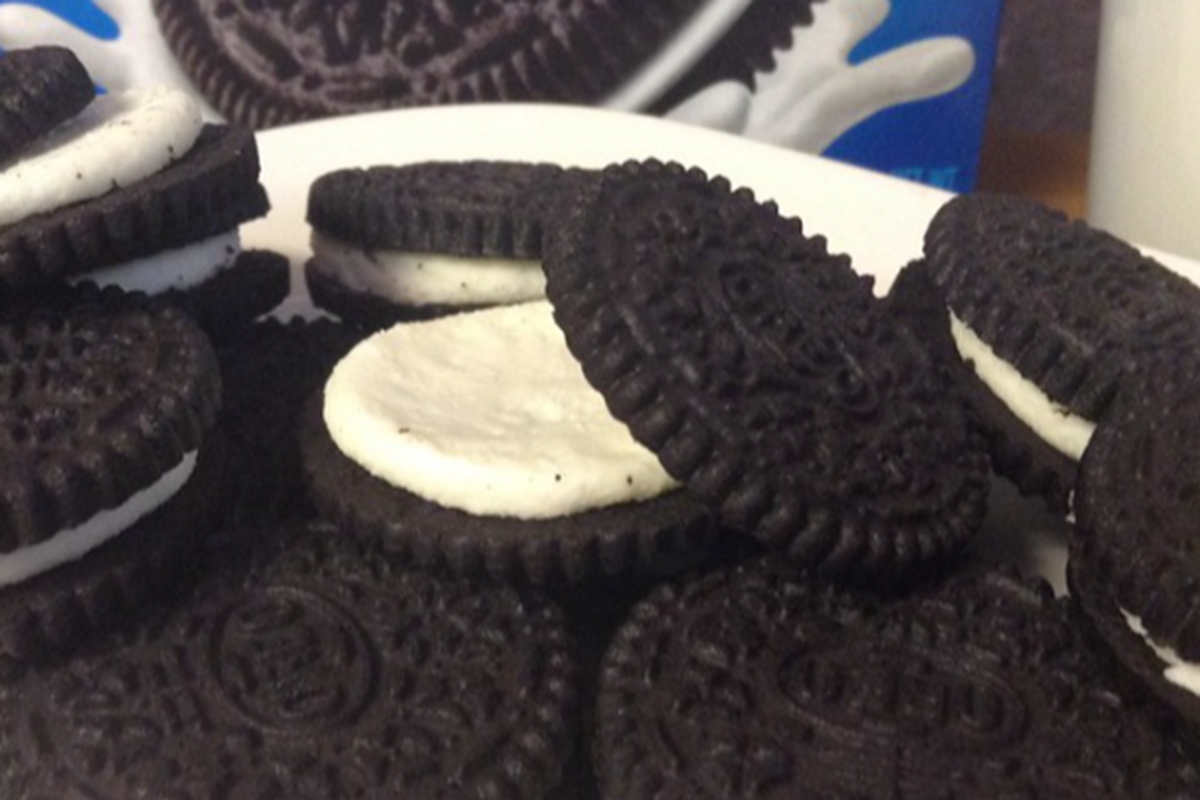
There are a lot of snack foods people eat ritualistically. When I get a Twix bar I like to eat the caramel or peanut butter topping first and then the cookie wafer second. The cookie part is so delicious that I have to savor it by itself.
Some folks have a ritual with Reese’s peanut butter cups where they eat the top layer of chocolate and then swipe out the peanut butter center with their tongue.
When it comes to Oreo cookies, few people eat the cookie all at once. Many prefer to deconstruct the cookie by twisting the black wafer sides and then licking out the creme off of each side. Part of the fun is attempting to twist the cookie and have an even amount of creme on each side of the wafer—a feat that is nearly impossible.
(Note: The white center of an Oreo cookie is made with what Nabisco refers to as “creme,” not cream because it isn’t made with any dairy.)
People have been perplexed for decades over why almost all of the creme always ends up sticking to one side of the separated cookie. The phenomenon is so mysterious that the brilliant minds at Massachusetts Institute of Technology (MIT) took up the monumental task of pursuing the answer.
“When I was little, I tried twisting wafers to split the cream evenly between the wafers so there’s some on both halves — which in my opinion tastes much better than having one wafer with a lot of creme and one with almost none. This was hard to do when I was trying it by hand,” Crystal Owens, lead author of a study published Tuesday in the journal American Institute of Physics and a researcher in mechanical engineering at MIT, said according to CBS Boston.
“There’s the fascinating problem of trying to get the creme to distribute evenly between the two wafers, which turns out to be really hard,” says Max Fan, an undergraduate in MIT’s Department of Mechanical Engineering.
To figure out why the creme always sticks to one side, researchers developed the Oreometer, a device that rotates and splits the cookie with an identical amount of torque on each wafer. Researchers found that the amount of torque needed to split a cookie was equivalent to the pressure needed to twist a doorknob.

The team subjected the cookies to standard rheology tests and found that the creme center almost always stuck to just one side of the cookie. The only time they could get the creme to be distributed evenly is when the box of cookies was older.
The researchers realized that the dominant wafer is determined when the cookie is manufactured.
“Videos of the manufacturing process show that they put the first wafer down, then dispense a ball of cream onto that wafer before putting the second wafer on top,” Owens said. “Apparently that little time delay may make the cream stick better to the first wafer.”
Mystery solved.
The good news is that if you‘ve been trying for years to master the perfect twist that results in evenly distributed creme and failed, you’re not the problem, it’s the cookie. The odds were stacked against you and you didn’t know it.
